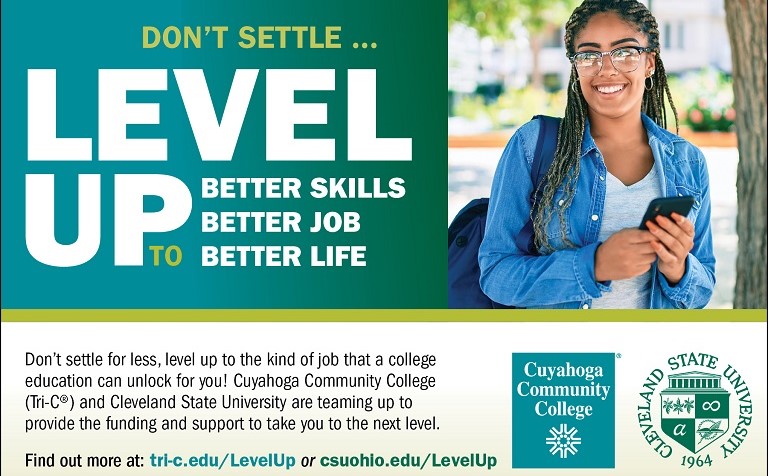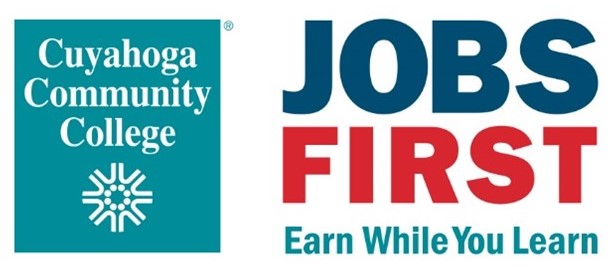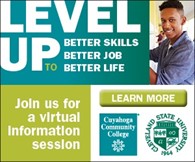New Cuyahoga Community College Initiative Recovers Students Affected by COVID-19

The interruption of high school students’ postsecondary education plans due to the COVID-19 pandemic is a troubling trend with long-term negative ramifications for students as well as for the nation’s economy. The trend has been particularly severe among low-income, African American, and Hispanic students (Belfield & Brock, 2020; Causey et al., 2021; National Student Clearinghouse Research Center, 2021; St. Amour, 2020). To counteract this disturbing course of events, Cuyahoga Community College (Tri-C®) and Cleveland State University (CSU) joined forces in early 2020 to recruit or reenroll students from the Cleveland Metropolitan School District (CMSD) and inner-ring suburban high schools who either postponed or stopped their education during the pandemic. The goal was to remove barriers so that 5,000-6,000 of Greater Cleveland’s most vulnerable high school students and recent graduates would enroll or reenroll for the fall 2021 term at either Tri-C or CSU. The resulting collaborative solution, extended to include 2022 graduates, includes targeted outreach, wraparound student services, institutional and community resources, and financial support to get students back on track toward degree or certificate completion.
The Socioeconomic Impact of COVID-19 on Higher Education Enrollment
COVID-19 has disproportionately affected low-income students and students of color, with many 2020 and 2021 high school graduates in these socioeconomic groups abandoning college plans because of the pandemic (Belfield & Brock, 2020; Causey et al., 2021; National Student Clearinghouse Research Center, 2021; St. Amour, 2020). Driving factors included loss of income and/or child care, the need to care for family members, a lack of technology and/or connectivity, and other online learning challenges. Without intervention, encouragement, and support services, many of these students may have forgone higher education altogether, effectively relegating them to a life of low-paying jobs, intermittent employment, and poverty (Belfield & Brock, 2020; Dickler, 2020; Dickler, 2021; St. Amour, 2020). Historically, these socioeconomic groups have lower levels of educational attainment and, not coincidentally, higher unemployment rates (Espinosa et al., 2019; Rios-Aguilar & Deil-Amen, 2019). The pandemic has widened this equity gap.
The drop in 2020-2021 college enrollment threatened to exacerbate Northeast Ohio’s already critical need for an educated workforce. An estimated 65 percent of Ohio workers will need a degree or certification to meet on-the-job demands by 2025. The Greater Cleveland area falls far short of that bar. According to Team NEO (Duritsky, 2021), a business development organization focused on accelerating economic growth and job creation throughout the region, only 37 percent of the population has earned an associate or bachelor’s degree. The two institutions with the greatest potential to increase the proportion of adults with postsecondary degrees and certificates are Tri-C and CSU. Longstanding partnerships between the institutions have created structured pathways to four-year degrees for many disadvantaged students and provided a strong foundation for this new collaboration.
Scoping the Issue
The program, initially dubbed Operation Recovery, sprang from a discussion between Tri-C President Alex Johnson and CSU President Harlan Sands in fall 2020. They recognized the long-term repercussions of enrollment declines on local businesses and the regional economy as well as on students and their families. At the presidents’ behest, a team led by provosts from both institutions began meeting in early 2021 to determine specific student populations (i.e., new from high school, delayed from high school, stop-outs); target high schools; expected outcomes; and the financial, academic, and technological resources, services, and marketing approaches needed to reach, recover, and ensure success for these populations.
Initial questions included:
- How do we reach current and recent high school graduates with limited or no access to technology?
- How do we address two significant barriers to enrollment: financial need and either a lack of technology or a reluctance to learn online?
- What resources and funding would be needed to bridge the digital divide, cover tuition costs, and develop or expand wraparound services?
- How do we collaborate with CMSD, other target high schools, and community organizations to connect with students and support those who enroll?
- How do we build upon established programs at each college to leverage capacity and resources?
- How do we use community-based Tri-C Access Centers to engage parents and students?
- What messages would resonate with these students, and what financial resources would be needed to effectively market the program to them?
The team also discussed how to leverage existing shared initiatives between the two institutions, such as the Say Yes Scholar Program for CMSD students, which aims to close the gap on tuition costs and help more students attain a postsecondary education; Degree Link, which provides a structured and seamless transfer experience for students pursuing a four-year degree beginning at Tri-C and culminating at CSU; and the Mandel Continuing Scholars Program, a unique opportunity for students interested in transferring to the Jack, Joseph and Morton Mandel Honors College at CSU upon graduation from Tri-C.
Desired program outcomes included:
- Increased enrollment of 2019-2021 graduates from CMSD and targeted suburban high schools;
- Increased reenrollment among stop-outs;
- Increased enrollment of dually enrolled or cross-registered students and those with intent to transfer;
- Increased applications/acceptance into Degree Link;
- Increased applications/acceptance into the Mandel Continuing Scholars Program;
- Increased enrollment for 2021 Say Yes cohort; and
- Increased reenrollment for 2019 and 2020 Say Yes cohorts.
The team knew it would need compelling incentives to overcome enrollment barriers; distinctive communications to attract and recoup this audience; and a well-coordinated, easy-to-navigate enrollment process. Particular emphasis was placed on creating a one-stop solution to help students easily enroll or reenroll at Tri-C or CSU.
A Shift in Strategy
Initial recruitment and marketing strategies addressed financial need and remote learning barriers. As planning progressed, COVID-19 vaccines became available and businesses began to reopen. This created marketplace competition for prospective students. While not a true barrier for students, the suddenly hot job market presented a lucrative alternative to college for our target audience. Potential students could make $17 to $20 per hour at Amazon with only a driver’s license. Fast food chains offered free meals, higher hourly wages, and sign-on bonuses of $500 or more. The challenge was to make students consider where these jobs would take them in the long-term. We also had to neutralize potential either/or decisions by providing students with a viable way to work while attending school.

The team quickly adjusted recruitment and marketing plans to emphasize the long-term return on investment of college degrees and workforce certificates that lead to sustainable careers with advancement opportunities and family-sustaining wages. This included leveraging another Tri-C initiative: Jobs First, a newly developed earn-and-learn program designed to help students start working while taking college classes. The program matches students with secured external job and internship opportunities. Participants also receive career coaching and assistance with resume creation and interview preparation.
Prelaunch: Gaining Buy-In and Support
In July 2021, the team met with administrators from targeted high schools and other community organizations to review the proposed plan, gather feedback, and discuss next steps. Critical outcomes of these meetings included securing support for the initiative, gaining access to graduate contact information, and getting help distributing information to high school seniors, teachers, and counselors. Immediately following the meeting, attendees received flyers—one for staff and one for students—that they could use to explain the program to each audience.
Campaign Launch and Program Rollout
Launched in mid-July, the marketing campaign focused students’ attention on the career opportunities provided by a certificate or four-year degree while addressing financial barriers and apprehension surrounding remote learning. The campaign’s theme, Level Up, plays off an expression commonly used within the target age group to indicate self-improvement or increasing one’s stature in life. The accompanying support line—Better skills. Better job. Better life.—paints a picture of what success looks like in clear terms.
The Level Up campaign targeted both students and secondary audiences such as parents, peers, high school teachers and counselors, and community members. The campaign used a budget-friendly combination of direct outreach as well as digital, social, and offline marketing tactics executed through audience-appropriate channels. These tactics allowed us to communicate directly to current students and recent graduates of the targeted inner-ring suburban high schools, stop-outs from both institutions, and important influencers.
Wave I included geofencing to household devices on provided target lists, retargeting digital ads to those who engaged, and follow-up text messaging. Other tactics included selectively placed digital ads, robocalls, and social media. All tactics drove students to a landing page where they could learn more and register for information sessions. Offline tactics included postcards mailed to homes and flyers distributed to high schools.

Virtual information sessions were jointly presented by Tri-C and CSU in summer and fall 2021. Students learned about each institution, including available financial support, student resources, and how to get started. In-person events took place at Tri-C Access Centers and high schools to provide students and families with a facilitated one-stop information and enrollment/reenrollment solution.
The marketing campaign for spring 2022 will expand to include Web banner ads, phone calls, streaming and terrestrial radio ads, digital billboards, and posters placed in the high schools.
Financial Support for Students
Beyond the federal and state grants available to many students, Level Up provides financial support to help with the indirect costs of education. Both Tri-C and CSU offer tuition incentive programs that reduce the cost of tuition for certain programs of study. Level Up students may also be eligible for some or all of the following:
- Up to $2,000 for expenses such as food, transportation, and books
- Tuition assistance to cover or reduce the cost of attendance
- Need- and merit-based scholarships
- Free laptop
- Student employment opportunities (e.g., part-time job, internship, work-study, experiential learning)
Funding and Other Resources
Level Up was primarily funded by federal relief dollars provided by the Higher Education Emergency Relief Fund through the CARES Act. Other initial and continuing sources of funding include Tri-C and CSU development office scholarships and emergency resources; community partnerships; food pantries; and community resources for food, housing, and/or financial insecurity.
Early Impact
Tri-C’s Enrollment Management and Integrated Communications departments worked together to identify the Level Up populations; create campaigns; conduct personal outreach; and track conversions from referrals from the high schools, information session attendance, and contacts from students requesting program information. From July through early November 2021, 940 students enrolled at Tri-C as a result of Level Up. This includes the enrollment of 391 new students for fall 2021, the recovery of 148 stop-outs, and the return of 594 continuing students.
Lessons Learned and Next Steps
A well-coordinated program with clear messaging, targeted and personalized outreach, and financial support and resources can overcome pandemic-related barriers and recover students. For instance, based on input from team members and students, it is unlikely that the nearly 1,000 students who enrolled at Tri-C based on Level Up recruitment efforts would have done so without this initiative. Additional takeaways from this initiative include the following:
- Agreement on funding for marketing and advertising earlier in the process would have allowed a more aggressive launch and the ability to reach a larger number of students. These dollars are critical in achieving frequency of messaging through various tactics.
- Engaging administrators at target high schools sooner would have resulted in earlier access to student lists for outreach, again providing more opportunities to attract and engage them.
- A lower-than-anticipated interest in Jobs First employment opportunities could be due to the current marketplace demand for entry-level workers. The team is building additional questions into the intake form and working to streamline and scale this process through better integration with Handshake, an online platform that helps students connect with employers.
Level Up is currently engaging with 2022 graduates, establishing a budget to continue and expand the marketing campaign, and exploring additional ways to help mitigate barriers such as persistent food insecurity and lack of housing or transportation.
Recommendations
- Agree on student incentives. If this is a joint initiative, offer the same incentives at both institutions. It simplifies messaging and eliminates comparison shopping based on perks rather than on which institution is better suited to the student’s needs.
- Play to your strengths. Rather than trying to do everything jointly, determine at the outset which organization—based on capacity and/or expertise—is better equipped to take the lead on certain aspects of the initiative. These groups can scope the issue and come back to the team with recommendations.
- Focus on significant barriers. It’s unlikely that you can eliminate every pandemic-related student barrier. Focus on the most significant ones that you can address for the program launch and partner with other community organizations for the rest.
- Create a partner toolkit. Provide partners and other influencers with materials to make it easy for them to communicate with constituents. This includes social media posts, website copy, digital ads, flyers and posters, robocall scripts, and more.
References
Belfield, C., & Brock T. (2020, November 19). Behind the enrollment numbers: How COVID has changed students’ plans for community college. Community College Research Center. https://ccrc.tc.columbia.edu/easyblog/covid-enrollment-community-college-plans.html
Causey, J., Harnack-Eber, A., Ryu, M., & Shapiro, D. (2021, March). A COVID-19 special analysis update for high school benchmarks. National Student Clearinghouse Research Center. https://nscresearchcenter.org/wp-content/uploads/2021_HSBenchmarksCovidReport.pdf
Dickler, J. (2020, November 19). Here’s how delaying college may impact your future earnings. CNBC. https://www.cnbc.com/2020/11/19/heres-how-delaying-college-may-impact-your-future-earnings.html
Dickler, J. (2021, October 26). College enrollment notched the largest two-year decline in 50 years, due to Covid. CNBC. https://www.cnbc.com/2021/10/26/due-to-covid-college-enrollment-saw-largest-two-year-drop-in-50-years.html
Duritsky, J. (2021, November 18). Aligning opportunities in the Northeast Ohio region. Team NEO. https://aligningopportunities.teamneo.org
Espinosa, L. L., Turk, J. M., Taylor, M., & Chessman, H. M. (2019). Race and ethnicity in higher education: A status report. American Council on Education. https://1xfsu31b52d33idlp13twtos-wpengine.netdna-ssl.com/wp-content/uploads/2019/02/Race-and-Ethnicity-in-Higher-Education.pdf
Esteban M. A., French, J., Ugalde Araya, M. P., & Zafar, B. (2020). The impact of COVID-19 on student experiences and expectations: Evidence from a survey. Journal of Public Economics, 191. https://doi.org/10.1016/j.jpubeco.2020.104271
National Student Clearinghouse Research Center. (2021). High school benchmarks: National college progression rates. https://nscresearchcenter.org/wp-content/uploads/2021_HSBenchmarksReport.pdf
Rios-Aguilar, C., & Deil-Amen, R. (2019). Taking history, funding, and current challenges into account when discussing race, ethnicity, and completion in community colleges. American Council on Education. Invited essay in L. L. Espinosa, J. M. Turk, M. Taylor, & H. H. Chessman (2019). Race and ethnicity in higher education: A status report. https://1xfsu31b52d33idlp13twtos-wpengine.netdna-ssl.com/wp-content/uploads/2019/02/REHE-Essay-Chapter-5-SA.pdf
St. Amour, M. (2020, December 10). Low-income community college students most likely to cancel plans. Inside Higher Ed. https://www.insidehighered.com/news/2020/12/10/analysis-low-income-community-college-students-most-likely-report-canceling-college
Jenny Febbo is Vice President, Integrated Communications, at Cuyahoga Community College in Cleveland, Ohio.
Opinions expressed in Innovation Showcase are those of the author(s) and do not necessarily reflect those of the League for Innovation in the Community College.










